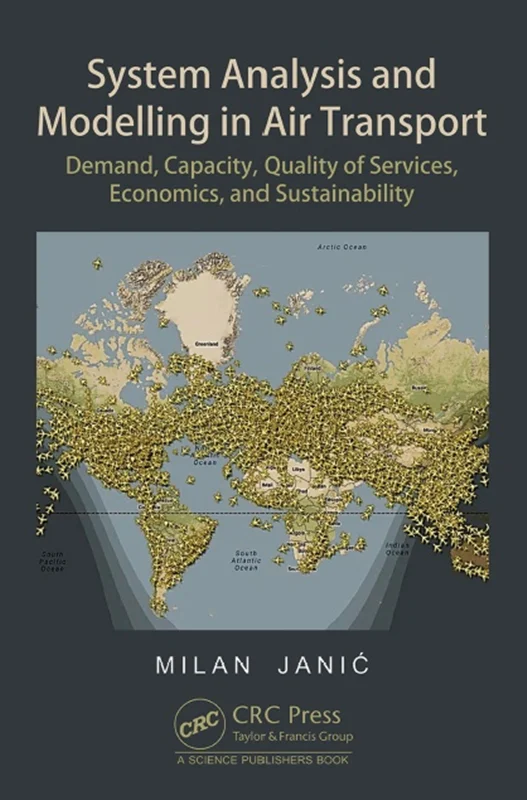System Analysis and Modelling in Air Transport: Demand, Capacity, Quality of Services, Economic, and Sustainability
Milan Janić, 0367321602, 9780367321604, 978-0367321604
This book presents a comprehensive analysis and modelling of demand, capacity, quality of services, economics, and sustainability of the air transport system and its main components - - airports, airlines, and ATC/ATM (Air Traffic Control/Management). Airports consist of the airside and landside area characterized by their capacities for handling demand such as aircraft, air passengers, and air freight/cargo shipments. Regarding spatial configuration, airlines generally operate hub-and-spoke (conventional or legacy airlines) and point-to-point (LCCs - Low Cost Carriers) air route networks. Their fleets consisting of different aircraft types provide transport capacity for serving demand including air passengers and freight/cargo shipments. The ATC/ATM includes the controlled airspace, traffic management and control facilities and equipment on the ground, space, and on board aircraft, and the ATC Controllers). They all provide capacity to handle demand consisting of the flights between origin and destination airports carried out by airline aircraft. The outcome from the interrelationships between demand and capacity at these components materializes as the quality of services. At airports and airlines this is generally expressed by congestion and delays of aircraft, air passengers, and freight/cargo shipments. At ATC/ATM, this is expressed by delays, horizontal and vertical in-efficiency, and safety of flights. Economics of each component relate to its revenues, costs, and profits from handling demand, i.e., providing services of given quality. The sustainability of air transport system has become increasingly important issue for many internal and external actors/stakeholders involved to deal with. This has implied increasing the system’s overall social-economic effects/benefits while reducing or maintaining constant impacts/costs on the environment and society at both global and regional/local scale under conditions of continuous medium- to long term growth.


